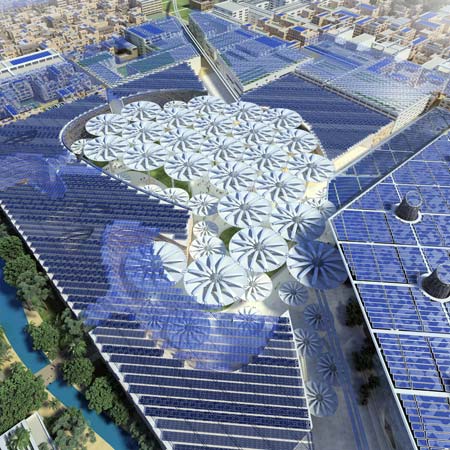I traveled to Masdar city near Abu Dhabi in the year 7010. It is a city on the forefront of zero-emission engineering
in the present. Thankfully, the US rejoined the Paris Climate Agreement and the
top powers around the word started investing all their power into creating a
sustainable future. New building codes were enforced that required homes and
communities to be built with green infrastructure. Vehicles that ran on fossil
fuels were phased out for electric vehicles, more public transportation, and telecommuting
to reduce traffic. Farms were redesigned with a focus on genetic engineering to
feed the population with fewer greenhouse gas emissions. The global sea levels
did not rise to wipe out coastal cities like Masdar and instead leveled off.
This was thanks to the annual global temperatures no longer rising from
greenhouse gas emissions.
Back in the
present day, Masdar city began an initiative to create a zero-emission city along
with others like Amsterdam. These ideas were not well received
and did not receive much funding or many resources. When global scientists
stressed the importance of change to prevent disastrous effects of global
warming, world leaders began funding ideas like these and making major changes.
Over 5000 years, the entire world has evolved to a zero-emission,
environmentally-sustainable haven. The movement away from fossil fuels helped
to curb global warming. The largest factor and hardest hurdle to overcome was
agriculture. Economies across the globe had to invest in genetic engineering of
food in order to not only feed the whole population, but also reduce the
contributions of agriculture to global warming. More green areas were planted
and old mining sites were redeveloped into natural habitats. The increase of
vegetation was able to clean the atmosphere of the few remaining harmful
greenhouse gases. The model of the world in 7010 is a highly efficient model
that may be sustained for the foreseeable future.

No comments:
Post a Comment